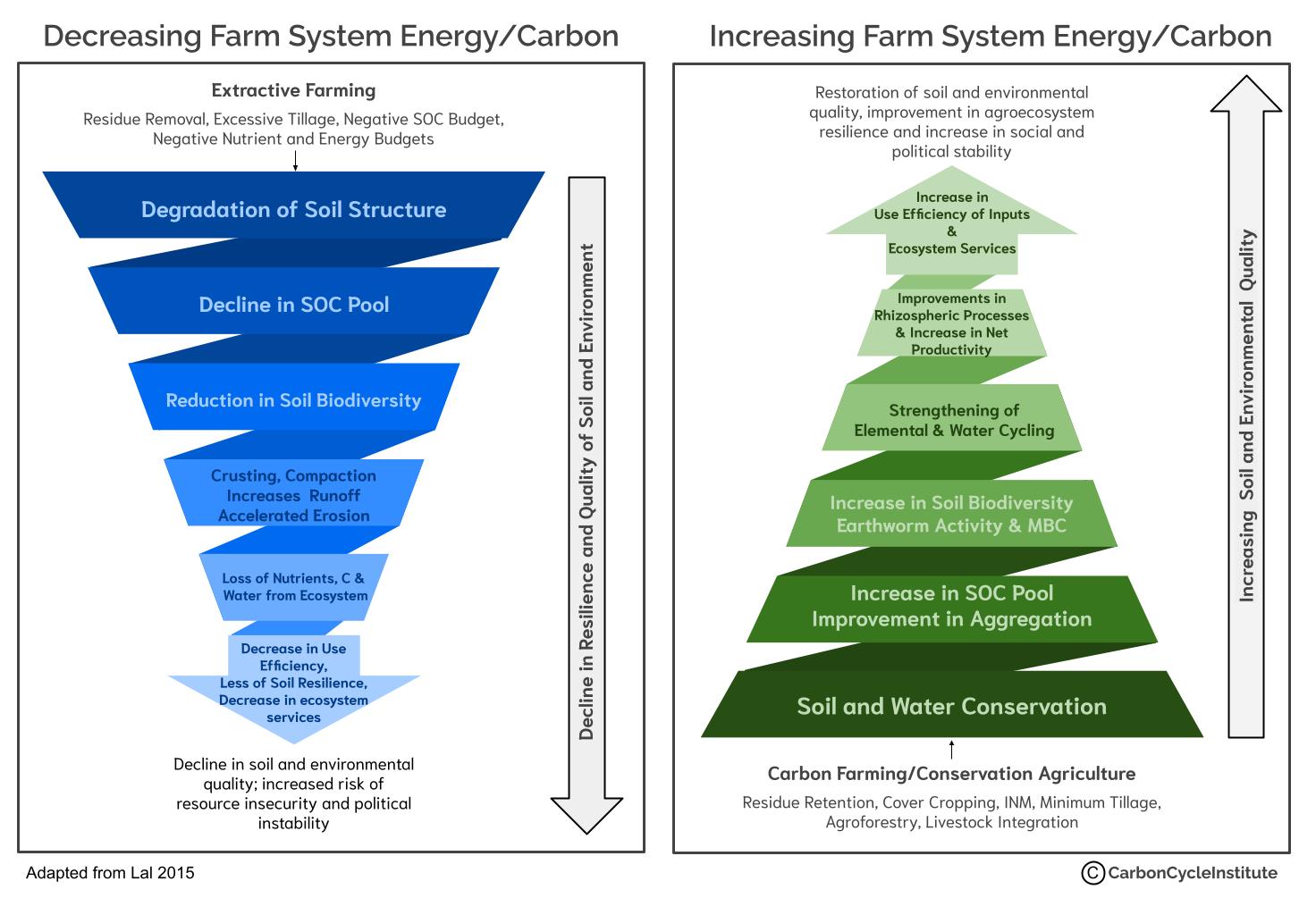Agriculture and Climate Change
Agriculture and forestry practices account for at least 24 percent of global carbon emissions and 9 percent of U.S. carbon emissions (1). Under current land management practices, agriculture remains one of the leading contributors to global carbon emissions. However, it is the only economic sector with the potential to transform itself from a net carbon emitter to a net sink using practices broadly classified as “carbon farming”. These practices can help remove carbon dioxide from the atmosphere, and store it for long periods of time in soil, microorganisms, and plant matter. Climate scientists estimate that 200 billion tons of carbon dioxide would need to be removed from the atmosphere to halt and begin to reverse the effects of climate change (2). The world’s agricultural soils can meet this challenge if change the way we grow food (3).
What is carbon farming?
Carbon farming is a broad set of agricultural practices across a variety of farm types that result in increased storage of atmospheric carbon in the soil. Many of these practices are common in organic farming, regenerative agriculture, permaculture, and other approaches to food production. When plants photosynthesize, they remove carbon dioxide from the atmosphere and store it. When they die, this carbon is either released back into the atmosphere or it is stored for long periods of time in the soil. Many conventional agriculture practices result in the release of carbon, while practices classified under carbon farming aim to do the opposite.
Some examples of practices that farmers (or even gardeners) can employ to help sequester carbon and improve soil health include:
- Leftover biomass is returned to the soil as mulch after harvest instead of being removed or burned.
- Conventional tillage practices are replaced by conservation tillage, no till, and/or mulch farming.
- Cover crops are grown during the off-season instead of leaving croplands bare.
- Continuous monocultures are replaced by high diversity crop rotations and integrated farming practices.
- Intensive use of chemical fertilizers is replaced by integrated nutrient management and precision farming.
- Intensive cropping is replaced by croplands integrated with trees and livestock.
- Surface flood irrigation is replaced by drip, furrow, or sub-irrigation.
- The indiscriminate use of pesticides is replaced by integrated pest management techniques.
- Marginal and degraded soils are restored to their natural states instead of being used as cropland.
Many of these practices can be used in combination with one another or applied one at a time. Almost all cropland can be improved with these practices and more. We have the science and technology; the real barriers to changing our agricultural system are economic, social, and political barriers.
Benefits of carbon farming
In addition to offsetting emissions, carbon farming practices have the added benefits of restoring degraded soils, enhancing crop production, and reducing pollution by minimizing erosion and nutrient runoff, purifying surface and groundwater, and increasing microbial activity and soil biodiversity. It is important to recognize the value of these other benefits, so they don’t aren’t overlooked when implementing policies that encourage carbon sequestration in soil.
The added benefits of carbon farming mean that more food can be produced with less pollution while building soil and sequestering carbon dioxide. If accomplished at a large enough scale, carbon farming practices have the potential to begin to reverse the catastrophic effects of climate change. Promoting and growing the use of these practices is one of the best avenues for meeting carbon emissions reduction goals and mitigating climate change (3).



















